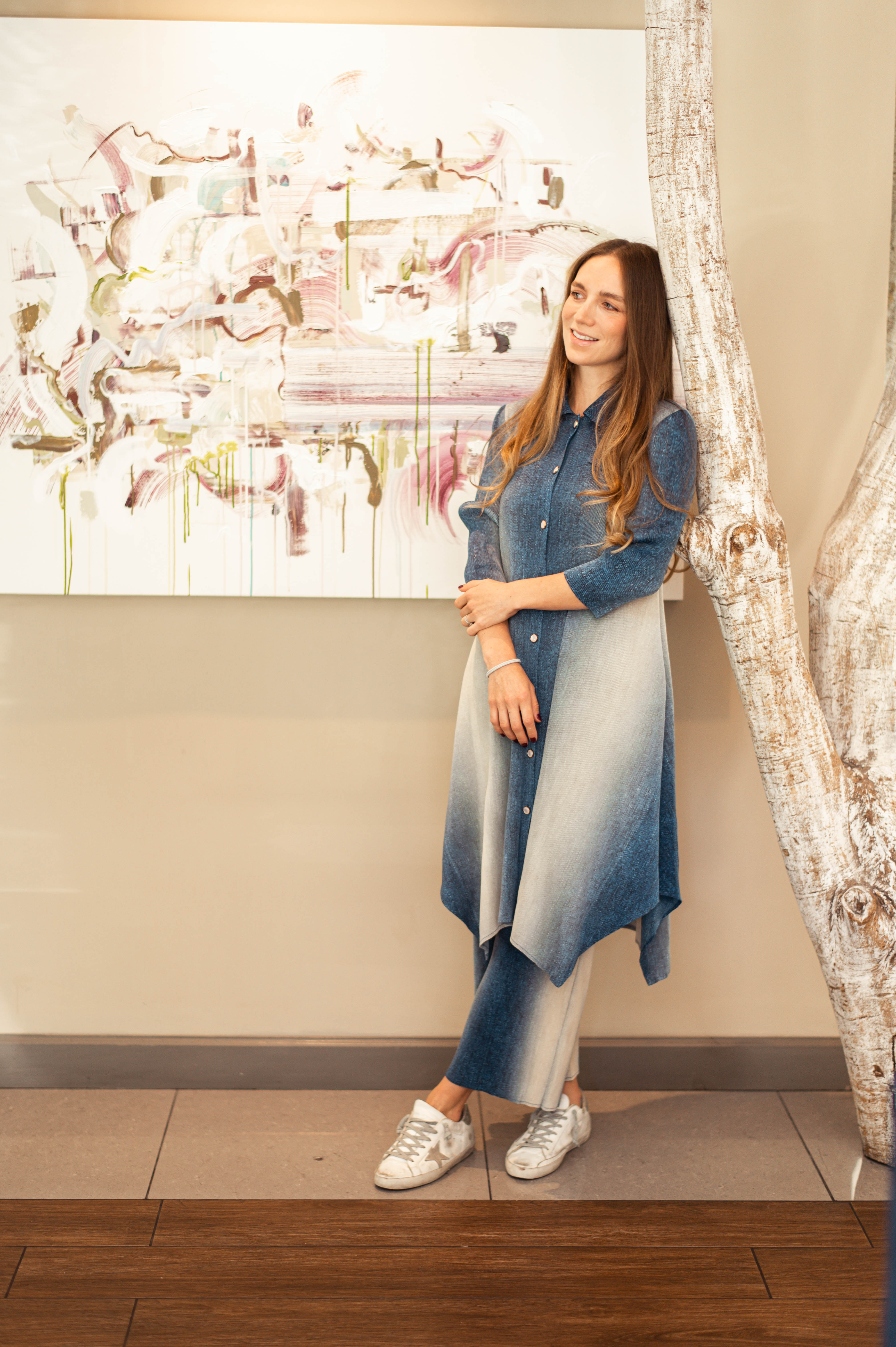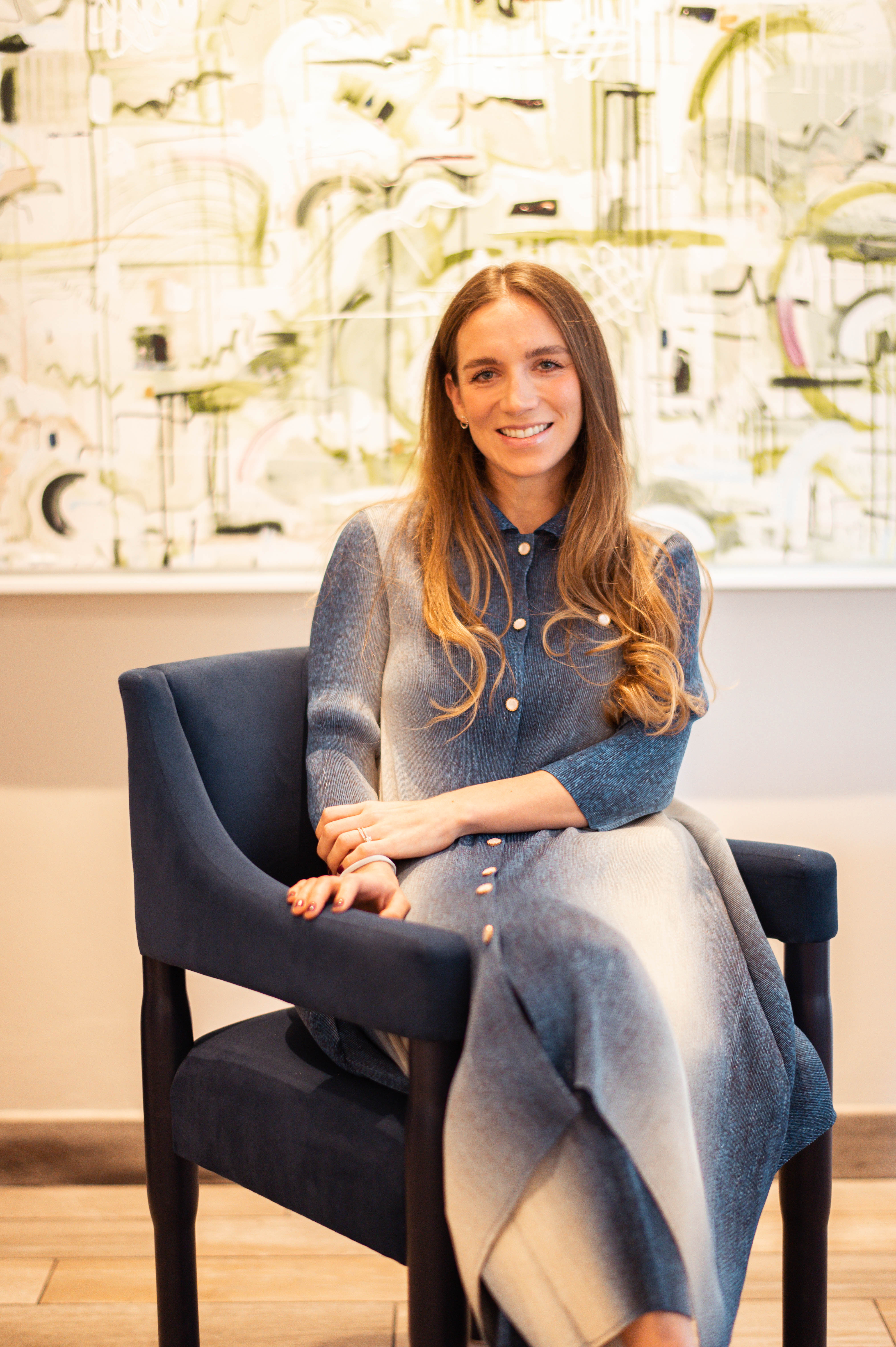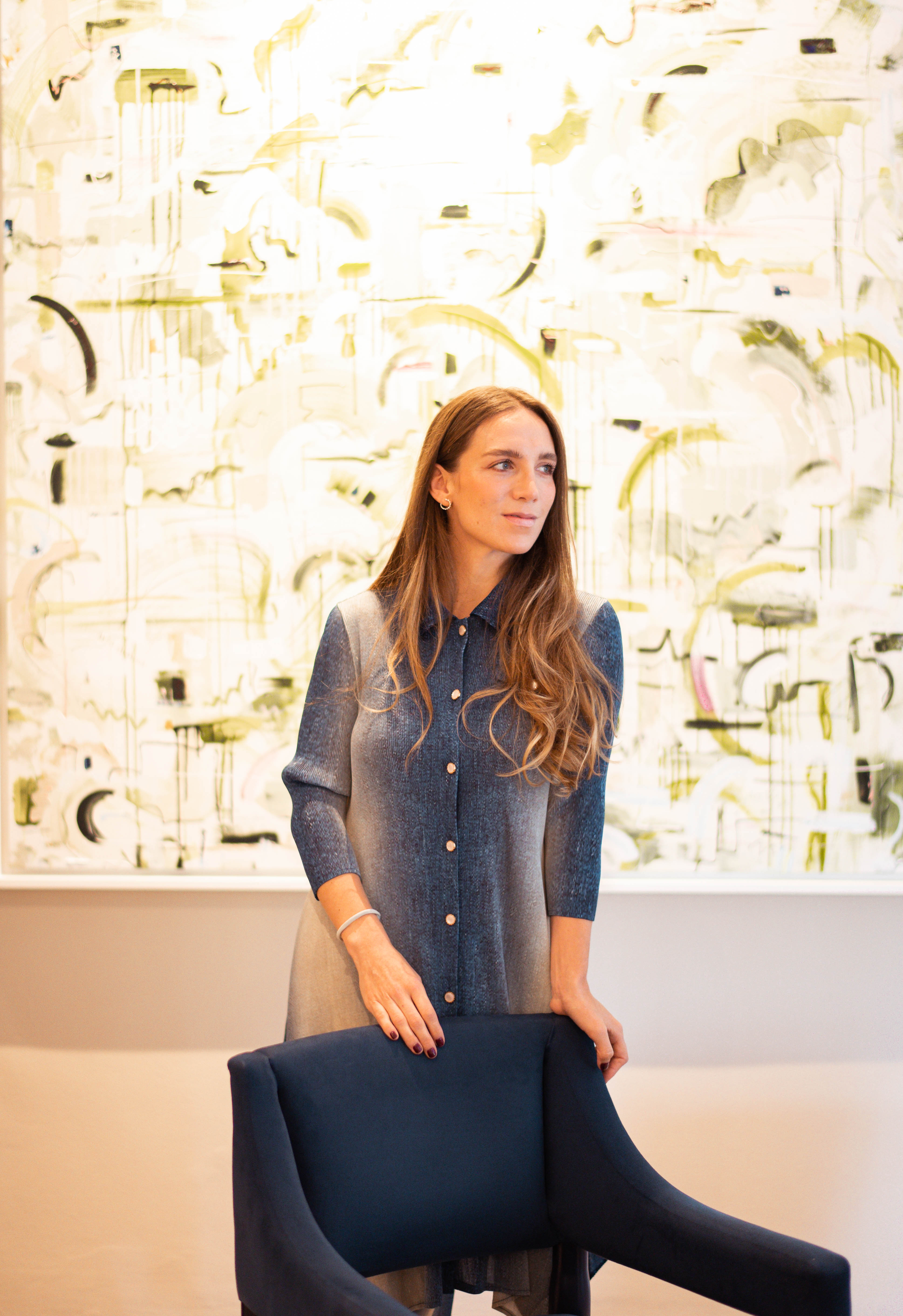F L A U N T


Rising contemporary artist Lucia Bueso has captured the attention of the art world with her painting Trazos de Esperanza (“Traces of Hope”), recently featured in Forbes. The piece marks a defining moment in her career, signaling her arrival as a bold new voice in the contemporary abstract world.
Lucia created the piece during what she describes as a personal period of transformation. “I was searching for inner balance while also learning to embrace the inevitable chaos of daily life,” she said. “Painting it felt like finding peace within disorder.” The result is a composition that blends intuitive brushwork, rhythmic contrasts, and layered textures—elements that reflect the very tension she was working through.
The painting’s style draws heavily from abstract expressionism, echoing the influence of artists like Helen Frankenthaler. Yet Lucia brings a distinct voice rooted not only in artistic lineage but also in lived experience. “There’s a rawness and honesty that comes from painting intuitively, letting the marks lead the way,” she said. “At the same time, there’s a clear sense of structure and intentionality. That balance is what I’m always searching for.”
Lucia’s influences range from mid-century architecture and modern interior design to a deep study of color theory. Her understanding of how color shapes emotional and spatial perception is key to her work. But just as vital are the more intimate sources of inspiration: motherhood, healing, and the daily dance between order and chaos. “I try to create compositions that feel alive and in motion,” she explained, “where layered textures and contrasting gestures come together to tell a story that can’t be put into words—only felt.”

The title Trazos de Esperanza was originally used by Forbes in its feature, and Lucia decided to keep it. “It perfectly captured the energy of the piece,” she said. “Even in uncertain times, there’s always a current of hope pulling us forward. Every brushstroke was made with the intention of creating space, light, and direction.”
Seeing such a deeply personal work in a high-profile publication was “surreal,” Lucia said. But the impact went far beyond the emotional. She was contacted by new collectors and curators, and the exposure provided a meaningful push forward in her practice. “It gave me a strong sense of internal validation—especially as someone who doesn’t come from a traditional art education background,” she shared. “It pushed me to trust my voice even more.”
Lucia’s creative process is largely intuitive. Most pieces begin without a fixed destination. Trazos de Esperanza, she said, “started like any other exploration, but there was a moment where everything just clicked—the colors, the energy, the flow.” She rarely knows what a piece will become, allowing each layer to guide the next. “The painting tells me,” she said.
Deciding when a piece is finished is equally instinctual. “It’s a very subtle moment,” she noted. “It’s when I no longer feel the urge to change anything. If I step away for a few days and return to it and it still feels balanced and whole, then I know it’s ready to be seen.”
With Trazos de Esperanza, Lucia has created a work that embodies her artistic philosophy: the meeting of structure and spontaneity. It’s a visual meditation on transformation, delivered through color, gesture, and emotion.
Through Trazos de Esperanza and her growing body of work, Lucia’s productions and pieces are actively influencing the field of contemporary art and gaining a distinguished reputation. Her ability to merge personal narrative with universal themes of hope, resilience, and transformation has resonated with audiences, collectors, and curators alike, positioning her as an emerging voice whose contributions are helping to shape the direction of modern abstract expressionism.
